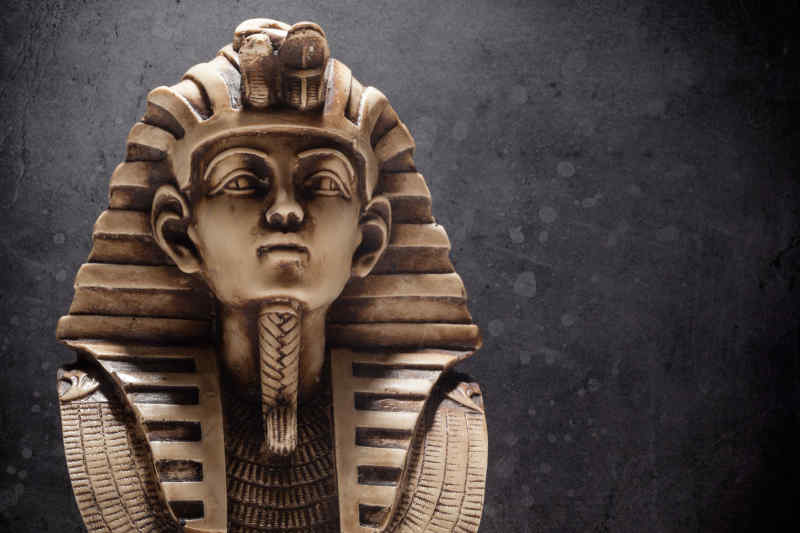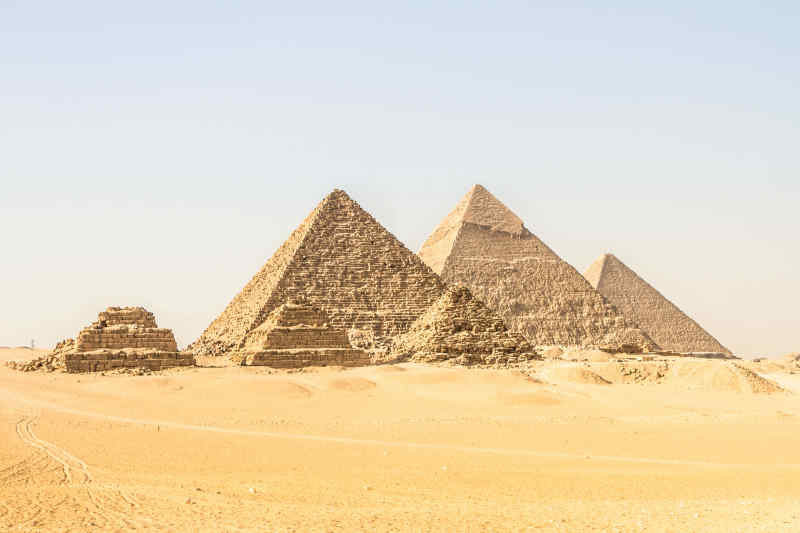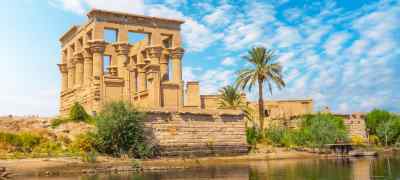By Soren Rivero
Located on the outskirts of modern-day Cairo is one of the world’s most legendary man-made natural wonders, the Great Pyramids. These architectural behemoths are an enduring symbol of humanity’s commitment, dedication, and innovation.
Constructed over thousands of years ago on the Giza Plateau, the Great Pyramids of Giza are an absolute must-see attraction.
This article will cover some information on the history behind the Pyramids in Egypt, but just be wary: we’re only scratching the surface! Keep reading for some interesting facts about the Great Pyramids of Giza.
Know Before You Read: Pharaohs, Egyptian Gods, Embalming:
From the beginning of the earliest governments in Egypt, kings had ruled over the Egyptian people as both political and social leaders. This would start to change around 2000 B.C.E, when Pharaohs were appointed as mediators between the gods and the Egyptian people. Pharaohs were also believed to have possessed divine power themselves – some even being chosen by the gods directly. Eventually, kings would be replaced by the powerful Pharaohs.
Egyptian political and religious figure heads believed that part of the Pharaoh’s soul (or ‘ka’) remained connected to their body even after death. In an attempt to preserve their spiritual essence, the process of mummification began to flourish within Egyptian society. One of the first ever cases of this unique preservation method was performed on King Osiris, who would later become known as the Egyptian Lord of the Underworld. His successor, Horus, would be deemed the Falcon-God and the Protector of Ra, the Egyptian sun god.
Earliest Iterations of the Pyramids
Cult members who buried the dead king laid with him a plethora of items, riches, and other supplies that would aid in sustaining him in the afterlife (where Pharaohs were prophesied to become gods). Other high-ranking officials, family members, and priests buried next to Pharaohs were to share in the wealth. However, the first tombs did not look like the pyramids we all know and love.
Kings and other important figure heads in early Egypt were originally buried in ‘mastabas’ – rectangular shaped constructs made of rock, in which tombs were carved out for the placement of coffins. These would be the “stepping stone” for the next stage of pre-Dynastic Egyptian burial sites, named ‘Step Pyramids’. The earliest step pyramid that researchers have found dates all the way back to around 2630 B.C.E, belonging to King Djoser. Step Pyramids would advance in intricacy and detail over the years, eventually leading to the largest Step Pyramid standing at about 204 feet tall.
The Creation of a Legend: The Great Pyramids of Giza
It was not until the 23 year reign of Pharaoh Khufu when the first image of the Pyramid came into fruition. Starting his project somewhere in the 2500 B.C, The Pyramids were intended to be the Pharaoh’s resting place with a design far grander than the Egyptians have ever seen. No name would be more fitting than to call it the Great Pyramid, as it would stand at a total of 481 ft. tall during its glorious days. Construction took about 20-30 years, with over 200,000 laborers. The Great Pyramid would then be surrounded by dozens of mastabas, ritual sites, the sarcophagus of his mother, and even a few smaller pyramids for his queens.
Inside the Pyramid is a complex system of narrow passageways, chambers, and corridors. Other unique features are the Grand Gallery (where a single rock directly underneath the Pyramid’s exact point is placed), the Queen’s Chamber, and the King’s Chamber. Pharaoh Khufu’s sarcophagus was believed to be housed within the King’s Chamber, but no evidence of his remains were ever found.
Khufu’s son would build the second largest Pyramid of the overall collective. Located in the center of the three, Khafre’s Pyramid is one of the most unique in terms of what it contains. The Pyramid’s complex hosts another of Egypt’s most prized monuments, the Sphinx, a half-man half-lion limestone structure that would be worshiped as a form of the god Horus. Interestingly, the Sphinx was buried up to its neck in sand until about the mid 1800s, when the rest of the body was revealed.
The last of the Great Pyramids of Giza was built by Khafre’s son, Menkaure. This Pyramid is the smallest of the three, standing at just about 218 ft tall before erosion occurred. A causeway connects two temples in the Pyramid complex, as well as three Pyramids for queens.
The Great Pyramids of Giza are all located on the Giza Plateau, near a bank of the Nile River and the city limits of modern-day Cairo.
How Were the Pyramids Built?
Hauling a lake’s worth of supplies from distant destinations was not an easy task, but the early Egyptian empires had a lavish supply of resources and a strong political influence that would serve as the backbone of each Pyramid’s construction. Some believe that the workers filled three month shifts and even traded workers from across the entire nation. One of the most grueling tasks for these workers, regardless of time and supply of workers, was moving massive rocks from one destination to another. Other supplies were carried in boats along the Nile River.
It’s important to keep in mind that these Pyramids were constructed way before any major inventions in architecture. It’s also assumed that the construction of the Pyramids were finished long before mathematics was widely recognized, and roughly 2000 years before Pythagoras’ theory of the triangle. So, how exactly were the Egyptians able to build the Pyramids?
Truth be told, no one knows for sure. At least not entirely.
The most recognized theory is that large stone blocks were slid down ramps using wet clay as a lubricant. A system of ropes, levers, and sledges would aid in the exact placement of blocks. A minority of scholars suggest that the Egyptians used some sort of internal ramps.
A major breakthrough in discovery was recently made (around the early 2010s), in which a handful of Pyramid enthusiasts proposed that the Egyptians used two important techniques. The first being the utilization of survey points, which somehow align directly with the shadow of the Pyramid in its direct center, bottom most point, and tip.
The second suggestion is that Egyptians used a tool called the plum bob (a spiritual weight attached to a string). This tool was used to find the vertical reference from the edge of the Pyramid’s base via the weight. The string attached would be traced towards the stars, which showed the exact angle of the Pyramid’s sides. These methods helped ensure the stability and overall smooth appearance of the Pyramids.
Each Pyramid’s smoothness is a true testament to early Egypt’s architectural prowess, and of course, dedication. What’s absolutely mind-blowing, however, is that the preciseness of the Pyramids surpasses even some of the buildings in modern-day societies.
Yet, even with these breakthroughs in research, scholarly debate is still ongoing regarding how exactly the Pyramids were built. Another fascinating fact is that the alignment of the Pyramids with the stars (particularly the orientation towards the Orion constellation), suggests that the Pyramids have some sort of astronomical significance. A niche group of people, albeit sounding unfathomable, purely believe that the Pyramids were placed on Earth by aliens.
Manmade or supernatural, the Pyramids are a truly fascinating work of architecture that will continue to intrigue the minds of people worldwide.
Legacy, Cultural Impact, and Contemporary Discoveries
What remains of the Pyramids is nothing more than appearance and history. Unfortunately, the Pyramids have fallen victim to ransacking and plundering over the centuries, with nearly all of the interior remains never to be found. The peaks of each Pyramid have also eroded overtime due to natural and manmade devastations.
Even so, the mysteries of the Pyramids have inspired thousands of theories, expeditions, and even battles. From the story of alien intervention to Herodotus’ ancient Greek theories, the Pyramids will forever be a catalyst for inquiry and imagination.
No other world wonder represents human ingenuity and dedication quite like the Pyramids of Egypt. The silence of its presence on the Giza Plateau juxtaposes the conversations surrounding its construction.














